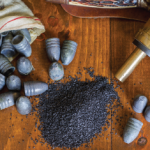To understand the dominance of the NIH in supporting research, in 2014, the 10 largest funding organizations in the world together funded research totaling $37.1 billion, constituting 40% of all public and philanthropic health research spending. The NIH share of $26.1 billion dwarfed the next two runners-up, the European Commission ($3.7 billion) and the United Kingdom Medical Research Council ($1.3 billion).4
The NIH appears to have chosen wisely: 149 NIH-supported researchers have been sole or shared recipients of 88 Nobel prizes. Since 1989, there has been only one year (1991) without an NIH-supported Nobel awardee.4 But taxpayer-supported research support is subject to considerable stresses, especially the whims of Congress. Consider that from FY 2003 to 2015, the NIH lost 22% of its capacity to fund research due to budget cuts, sequestration and inflationary losses, resulting in fewer grants and an exodus of talented investigators abandoning their careers.5,6
Yes, it’s money that keeps the lights lit & the centrifuges spinning. For many decades, that support has come primarily from the National Institutes of Health.
We have all witnessed the fallout caused by fiscal tricks, such as budget sequestration or reconciliation maneuvers, that effectively slashed research support. Labs were shuttered, and investigators moved on to pursue other opportunities. Some rheumatology programs lost several of their key faculty members, along with the fellows who were drawn to their research. Were it not for the singular fundraising efforts of the Rheumatology Research Foundation that helped offset the decline in taxpayer supported research, rheumatology’s commitment to investigation would have crumbled.
The Captains of Industry
Fortunately, a remarkable tradition of philanthropy exists in the U.S., one that has helped medicine weather some of these challenging fiscal stresses. If the NIH is the cake, then philanthropy is the icing.
In the past, private philanthropy in health was provided by three types of institutions. The earliest were local charities, such as the Community Chest and various religious welfare groups, which provided the funds to address pressing local health problems. National voluntary health agencies, such as the American Cancer Society, the American Heart Association and the Easter Seals Society, began to appear early in the 1900s, and their numbers rapidly multiplied after World War I. These institutions were formed in response to growing public concern about the nation’s major fatal and crippling diseases. They raised money locally, but spent it on nationally established priorities.

CHARAN RATTANASUPPHASIRI/shutterstock.com

